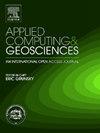A framework for constructing machine learning models with feature set optimisation for evapotranspiration partitioning
Abstract
A deeper understanding of the drivers of evapotranspiration and the modelling of its constituent parts (evaporation and transpiration) may be of significant importance to the monitoring and management of water resources globally over the coming decades. In this work a framework was developed to identify the best performing machine learning algorithm from a candidate set, select optimal predictive features and rank features in terms of their importance to predictive accuracy. The experiments conducted in this work used 3 separate feature sets across 4 wetland sites as input into 8 candidate machine learning algorithms, providing 96 sets of experimental configurations. Given this high number of parameters, our results show strong evidence that there is no singularly optimal machine learning algorithm or feature set across all of the wetland sites studied despite their similarities. At each of the sites at least one model was identified that improved on the predictive performance of our baseline. A key finding discovered when examining feature importance is that methane flux, a feature whose relationship with evapotranspiration is not generally examined, may contribute to further biophysical process understanding. This work demonstrates the applicability of a machine learning framework for evapotranspiration partitioning that is independent of domain knowledge, producing improved models for partitioning and identifying new and useful predictive features.

 求助内容:
求助内容: 应助结果提醒方式:
应助结果提醒方式:


